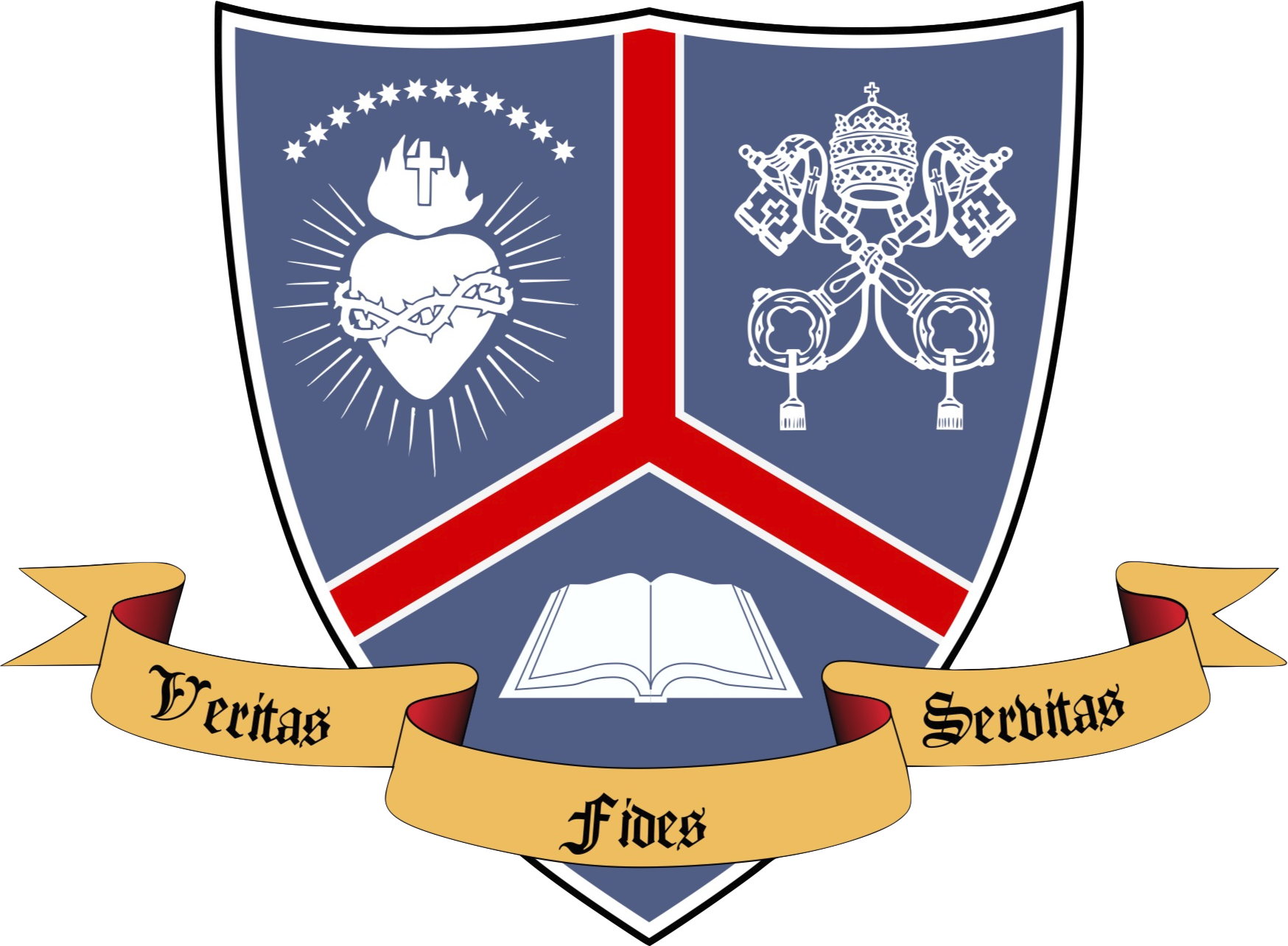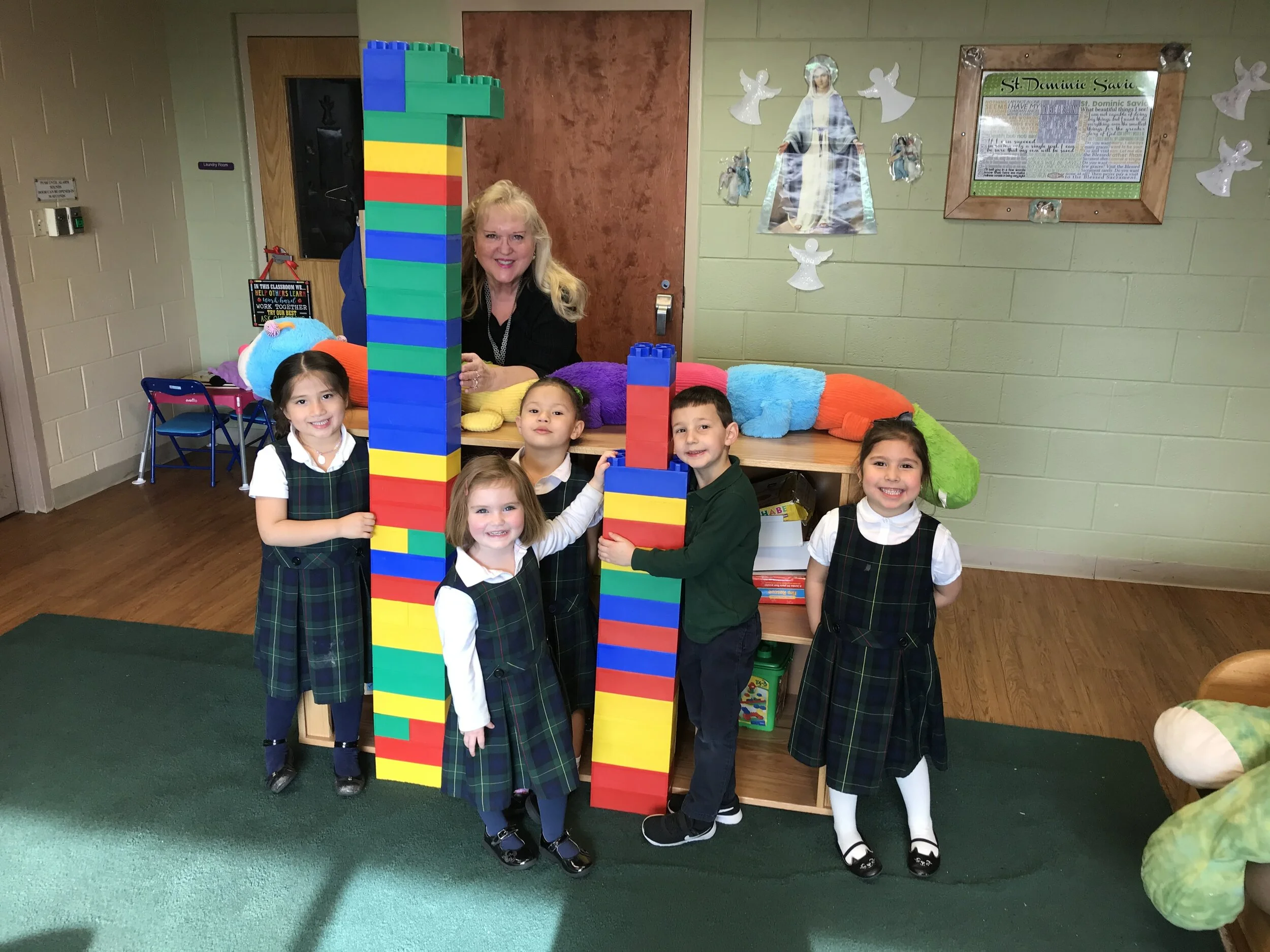Religion +
Students continue to learn about the love of our Savior, Jesus Christ, and a desire to follow Him is fostered. Throughout the day, students are often asked, “What would Jesus do?”
Continue exposure to the Church calendar and feast days; increase Bible stories & verses, review God’s Ten Commandments; continue to learn about the love of our Blessed Mother; continue exposure to the Saints’ lives; master fifteen prayers (a few in Latin), which is well beyond students’ chronological age, through an echo strategy; review Mass; continue to foster reverence for the sacred; review holy days. Each day, through the Catechesis of the Good Shepherd program, children enter the “atrium” to draw closer to God, and to experience an environment in which they encounter the sacred, more like the sanctuary than the traditional classroom.
Language Arts +
Phonics: students learn the phonemes of letters, identify them, and discriminate between capital and lower-case letters through the “Letter of the Week” program.
Language Arts/Reading: apply phonics sounds; improve comprehension; follow along with oral readers; review letter and sound association.
Language and Listening Skills: students develop these vital skills while they are introduced to the Good, the True, and the
Beautiful. In order to foster and cultivate a love for what is noble and high, each day the teacher reads classical literature; fables, fairy tales, and myths; stories of virtue; lives of saints and other heroes; and topical studies in cross-curricular topics.
Language Arts: Writing (Manuscript): achieve good writing posture, proper pencil grip and paper position; correct letter placement and formation; increased hand-eye coordination; correctly write first name, and correctly trace twenty-four lower-case letters and twelve capital letters; follow step-by-step instruction.
Language Arts: Poetry: memorize poems, finger plays and nursery rhymes, including actions and motions; recite in unison; continue to develop use of appropriate expression; increase comprehension through questions that encourage listening and thinking skills; identify with main characters; gain vocabulary enrichment such as understanding and producing rhyming words and opposite words.
Foreign languages +
Count to ten in the following ten languages: Chinese, Danish, French, German, Italian, Japanese, Korean, Spanish, Russian, and sign language.
Math +
Count from 1 to 100; recognize and understand number concepts from 1 to 20; trace numbers 1 to 20 and connect them in sequence by dot-to-dot; identify pairs; learn comparing: larger and smaller,
before and after, more or less, largest and smallest; addition: recognize symbols: +, =; add 1 to 1 through 9 using concrete objects; recognize shapes: circle, square, rectangle, triangle.
Readiness Skills +
Develop listening skills and motor coordination through activities such as following instructions, coloring, cutting, and directed drawing; free art also helps develop visual perception and motor skills.
Science +
Continue to learn about the following: animals and their habitats; eggs, Edison, flowers, garden, magnets, night, jungle, peanuts, pond, rain forest, rubber, sea, spring, fall, summer, winter, vegetables, water, wind and weather, zinnias, astronauts.
Social and Personal Skills +
Develop skills with coordinating character-building stories, including stories encouraging kindness, courtesy, gentleness, obedience, truthfulness, attentiveness, respect, good manners, helpfulness, cheerfulness, orderliness, diligence, dependability, thoughtfulness, self-control, unselfishness, and generosity.
Health, Safety, and Manners +
Continue to learn about healthy bodies and the senses; home safety, playground safety, community safety, and recognizing and obeying simple traffic signs; personal hygiene, nutrition, rest and exercise; manners.
History and Geography +
Continue to learn about this country and countries
around the world: Canada, England, Israel, Japan, Australia, Mexico, Netherlands, land of Africa.
Learn about people in our community: doctor, dentist, firefighter, letter carrier, nurse, pastor, police officer, veterinarian.
Music +
Continue to listen to and sing a variety of Catholic hymns, e.g. the Salve Regina in Latin, and folk, patriotic, animal, Mother Goose rhymes, motion and seasonal songs; fun songs about the alphabet and numbers, character-building, colors, counting, family and food; follow a song leader and stay together with classmates or CD; exposure to classical and sacred music each day.
Art +
Continue to develop fine motor skills while gluing, coloring, folding, incorporating moving parts, applying glitter, cutting and lacing; projects include animal, seasonal and scriptural themes; continue to develop technique through gluing, finger painting, sponge painting; 3-D objects.
Art Appreciation: continue to introduce artists and beautiful art through stories and child-sized masterpieces of art.
Motor Skills Development +
Continue to practice hand-eye coordination through various activities and games. Continue to refine motor skills through action games and finger plays; activities such as dress-up, puzzles, working with play dough, and making and flying a kite; coloring activities and directed drawing.
Creativity Development and Special Activities +
Participate in games about feeding animals, practicing table manners and household chores; identifying and associating tastes and sounds; acting out familiar stories, and making apple prints; having certain foods for snacks; acting out familiar stories; bringing animals to the classroom; having community helpers visit the classroom; and taking field trips.
Physical Education +
Each day students participate in fun, energetic individual and group activities that develop and enhance fine and gross motor skills.
Nap Time/Outside Play +
Each day students are provided with a quiet rest time appropriate to their needs; outside play time will occur each day, weather
Permitting.



